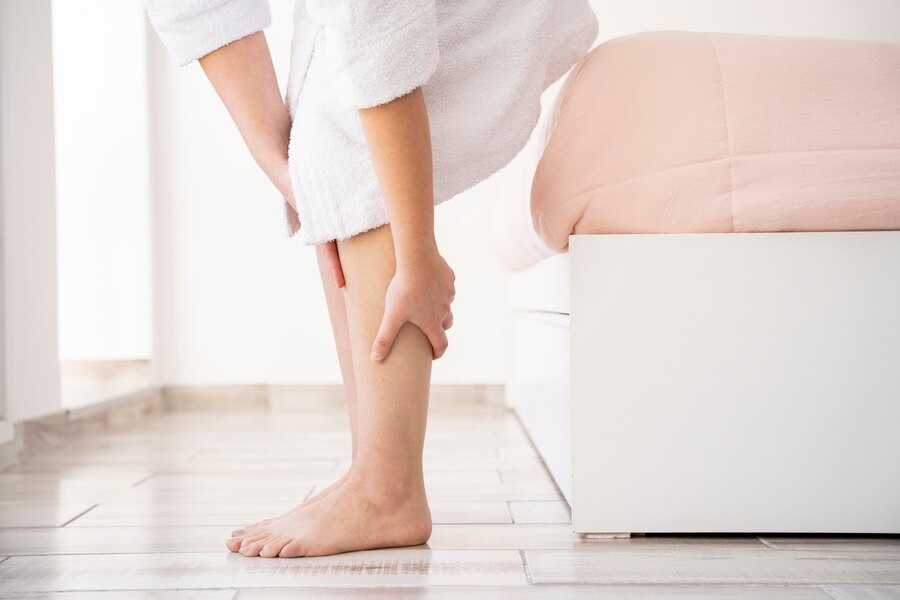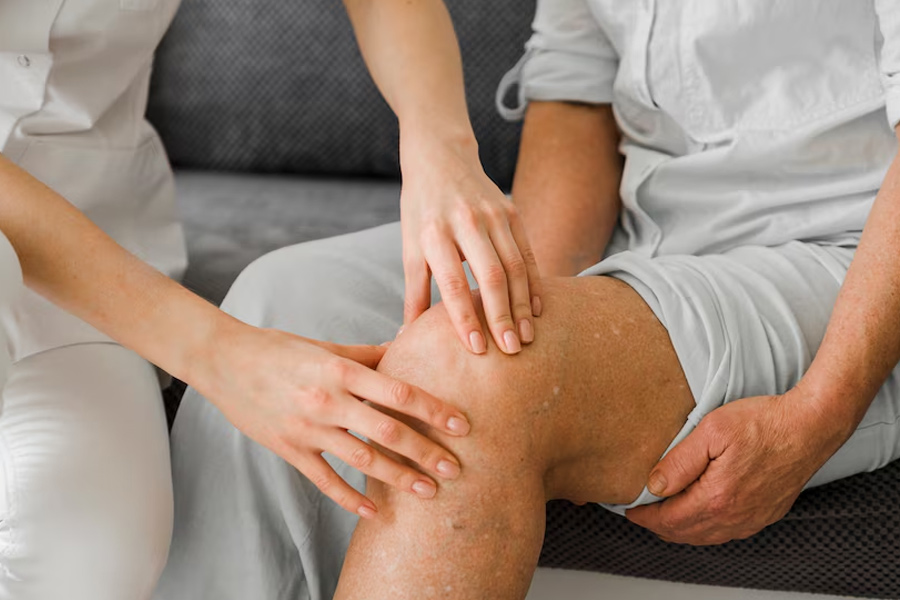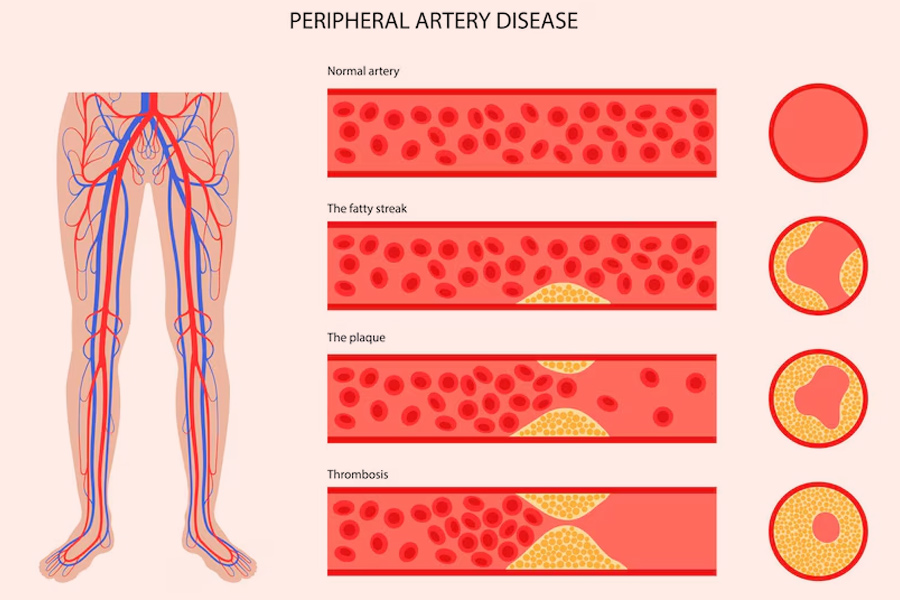
When discussing heart health, we often overlook conditions like Peripheral Artery Disease (PAD), which can be early indicators of cardiovascular issues.
PAD occurs when the arteries that supply blood to your hands and legs, basically your limbs, become narrowed or blocked, usually due to atherosclerosis. Atherosclerosis occurs when plaque builds up in the walls of your arteries—the same process that leads to heart disease. Over time, plaque hardens and can narrow or completely block the arteries, limiting blood flow and oxygen to your body.
Table of Content:-
So how do you know whether or not you have PAD? Although the condition can be asymptomatic, there are subtle signs that you must not overlook.
Also Read: 10 Tips To Improve Bad Cholesterol Levels
Factors That Contribute To Peripheral Artery Disease (PAD)![]()
Before we get into the symptoms, let’s understand what causes PAD, factors that contribute to it, and people who are at a greater risk of developing the condition.
According to Dr K N Nagabhushan, Senior Consultant, Vascular and Endo-Vascular Surgery, Fortis Hospitals, Bengaluru, diabetes is one of the major risk factors, and high cholesterol levels significantly contribute to the development of PAD.
“Elevated cholesterol promotes plaque formation within the arteries, narrowing and hardening them over time. This process reduces blood flow and raises the risk of blockages, making high cholesterol a major risk factor for PAD,” he told the OnlyMyHealth team.
Other factors that can contribute to its development include:
- Smoking
- High blood pressure
- Obesity
In addition, some of the people who may be at a greater risk of developing PAD include:
- Those who are older
- People who have a family history of heart disease
- Individuals who lead a sedentary lifestyle
- Those with unhealthy habits, such as poor diet or lack of exercise
How Does PAD Affect Your Legs?![]()
Dr Nagabhushan said that PAD affects blood circulation by restricting blood flow to the legs and feet.
"As arteries become narrower, patients may experience symptoms like pain during physical activity, known as claudication, as well as muscle cramps," he explained, adding, "In severe cases, insufficient blood supply can lead to ulcers or gangrene, highlighting the importance of early detection and management."
While PAD primarily affects the legs, it is important to note that it can also affect other parts of the body.
Individuals with PAD should be alert for symptoms such as leg pain or cramping during activity, weak or absent pulses in the legs or feet, coldness in the lower leg or foot, and changes in skin colour, including paleness or a bluish tint. Additionally, non-healing wounds or sores on the legs or feet can signal more severe complications.
Also Read: High Cholesterol And Weight Gain: Expert Explains How Cholesterol Levels Impact Weight Management
Skin Changes In The Leg Associated With PAD![]()
Interestingly, PAD can lead to various skin changes in the leg. Some of the signs to watch out for include:
- Shiny or smooth skin
- Hair loss on the legs or feet
- Thickened toenails
- Non-healing wounds
How To Manage And Reduce The Risk Of PAD?
According to Dr Nagabhushan, lifestyle adjustments can play a crucial role in preventing or managing the progression of PAD.
He said that quitting smoking is one of the most effective ways to improve blood flow and overall vascular health. In addition, regular exercise and a healthy diet low in saturated fats while rich in fruits, vegetables, and whole grains can help manage cholesterol levels.
Those with diabetes and hypertension should also regulate their blood sugar levels and blood pressure, respectively.
In severe cases, minimally invasive surgeries are also an option for treating PAD, offering techniques such as angioplasty and stenting to restore blood flow with less recovery time and reduced risk compared to traditional surgical methods, Dr Nagabhushan added, concluding that these procedures can significantly improve circulation and alleviate symptoms for many patients.
Also watch this video
How we keep this article up to date:
We work with experts and keep a close eye on the latest in health and wellness. Whenever there is a new research or helpful information, we update our articles with accurate and useful advice.
Current Version


